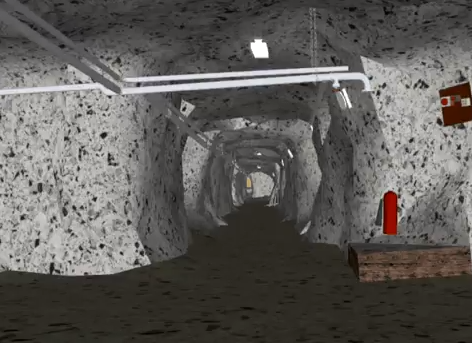THE HAGUE, The Netherlands – Mines, especially deep mines, present particular challenges for those engaged in 3D imaging work. It’s not only the harsh environment that needs to be overcome, you also have to factor in the skepticism of the mining fraternity toward new methods. “Deep mining is a rough, tough world,” explained Simon Barnes, CEO of In Good Measure at SPAR Europe 2011’s “3D Imaging for Mining and Tunnels” session. “If you haven’t been down there and broken your arm a couple of times they aren’t interested in what you have to say.”
Nonetheless, Barnes does think that there are “enormous opportunities” for laser scanning in deep mines, as long as the surveyors earn the respect of the miners and mine companies. “If you crack the culture of the people and give them a reason why they want it, that may be more persuasive and important than technical arguments,” he added.
Saving money is a persuasive argument: Barnes highlighted how his company had helped solve a murder case in a mine, speeding up an investigation that had been hampered by out-of-date 2D maps. In Good Measure produced a 3D animation from scans and witness statements, helping to prove the prosecution’s case. For the mine company, this meant that a section of mine that had been kept closed throughout the investigation could be reopened earlier, enabling output to return to normal ahead of schedule.
In Good Measure has also worked in partnership with 3Dmsi on the installation of a 2 km long chairlift in the world’s deepest mine, AngloGold Ashanti’s 4.1 km deep Mponeng gold mine in South Africa. 3Dmsi’s managing director, Dr James Jobling-Purser, told the audience at SPAR Europe, “We see huge potential for use of 3D in declines and underground working, engineering and design. Not only is 3D data geometrically accurate, it is also visually accurate.” 3D laser scanning was also used to help design underground workings that would fit into the mine shafts for a monorail installation at Mponeng. “The subtleties in the modified design are crucial to making it work,” said Jobling-Purser. He also showed how, for instance, his company was able to measure one 36 m section to within 5 mm of the pre-survey measurements given, and 360 times faster than trade surveying methods used. “3D laser scanning can give results that you were already getting, but faster and more accurately, with the added bonus of 3D visualization.”
For Jobling-Purser, the ability to “give figures that people can understand” is key to winning the support of the deep mining industry. “Anything that’s not going to hold up development they are keen on,” he added, noting that AngloGold Ashanti is “looking to roll out a lot more 3D laser scanning in 2012.”
Addressing safety concerns is also crucial to persuading mine owners that laser scanning is a viable option for them. Norbert Benecke from the Exploration and Geosurvey Division of DMT, explained that in Germany, where the company is based, “it was very easy to convince mine people that laser scanning is useful; the problem was regulations restricted the use of laser scanners.” The use of standard electrical equipment is strictly prohibited in gassy mines (mostly coal mines containing methane – CH4). It can only be used when additional safety measures are in place.
As a result, DMT and Z+F developed the IMAGER5006EX, the first laser scanner certified for use in explosive atmospheres under the European Union’s ATEX directives. The scanner has been used in gassy mine environments for fitting belt conveyors, planning new pipelines and bottleneck analysis. It can also be used in other explosible environments such as sewer systems and offshore platforms, noted Benecke.
DMT is also developing a Kinematic Shaft Survey System for mine shafts both with and without cages. There certainly appears to be great potential for 3D laser scanning in this harsh environment. “Twenty-four hour shaft operability is essential for the success of the mining operation. However, shaft conditions are specific and difficult for any survey,” noted Benecke. “A fast – less than one shift per inspection – and safe – remotely operated – survey system is required.” The system developed by DMT comprises an inertial measurement unit (IMU) and two IMAGER5006 laser scanners on a hoisting cage. “The scanners provide simultaneous data logger and repeat measurements, while the IMU is for measurement of shaft position,” explained Benecke. First practice tests took place last spring, mainly in abandoned mines.
According to Benecke, the full range of potential laser scanner applications in mining includes “as-built documentation, volume calculation, profile measurement, geological documentation and analysis, accounting of construction activities, deformation and convergence monitoring, bottleneck analysis, reconstruction work, maintenance and repair, and machine guidance.” Plenty of opportunities then, if the hard men of the mining world can be won over.






